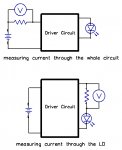- Joined
- Nov 19, 2007
- Messages
- 488
- Points
- 0
Re: 6x Blu-ray SLEDS GB! THEY ARE GOING FAST!

Wesdaman14 said:Hey amk thanks for the -Rep and lying to me. laser-jp sent me and lots of others the same email stating the price for the 6x lens is 42$ usd. You said you aren't making one penny out of this.... BS, Yes you are. Heres a screenshot to prove it dude. you just might wanna check before you -rep me for no apparent reason.







